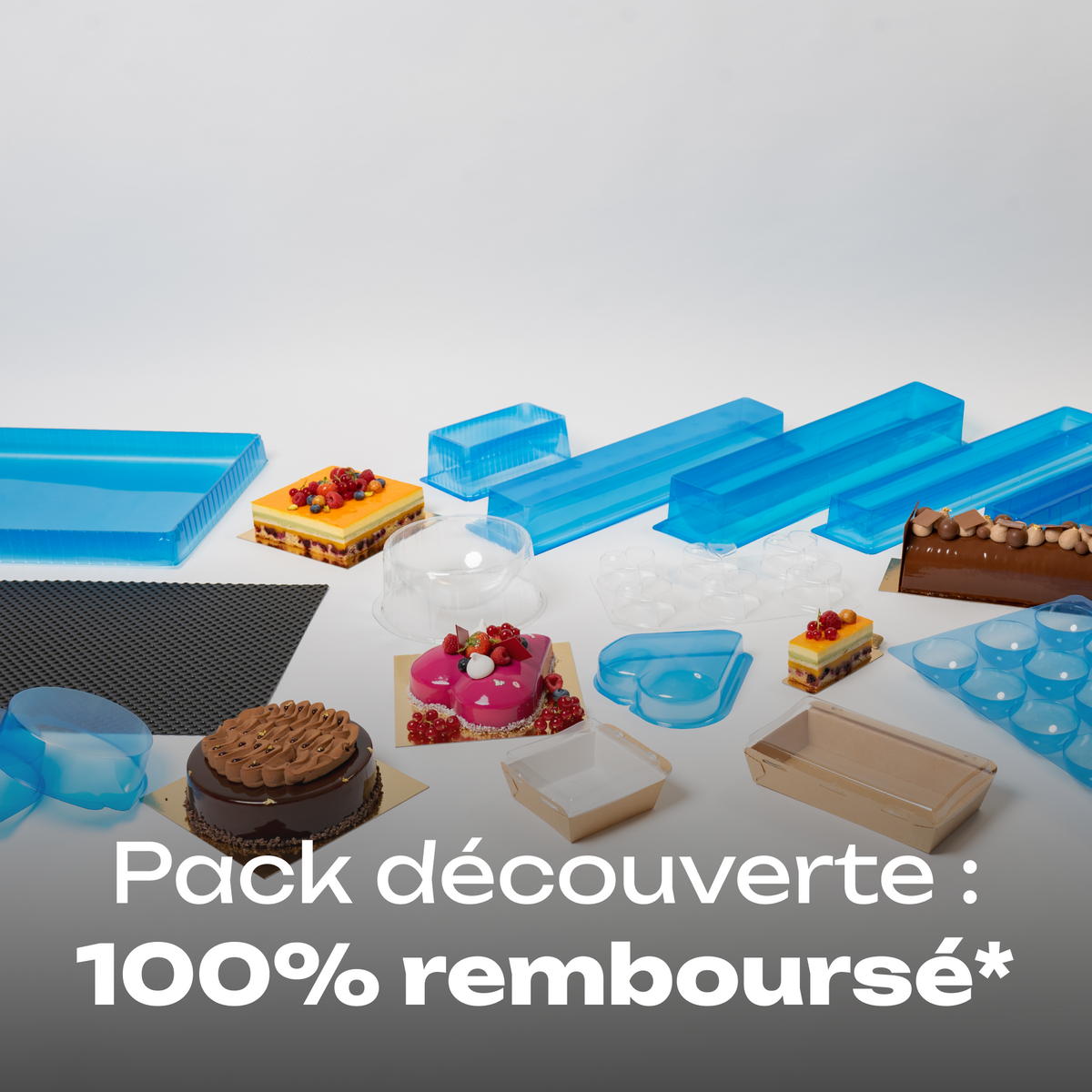What is the best baking pan? Stainless steel VS. plastic

Pastry, this delicate and precise art, requires the best tools for perfect results. Among these tools, the choice of mold is essential. To make logs, desserts and framed cakes, professionals often hesitate between stainless steel circles and molds and plastic molds.
So, what is the best baking pan?
For 3 weeks, we questioned and conducted a survey with 100 professional pastry chefs , users of both types of molds, and compared their opinions on 7 essential criteria concerning the development of a round dessert.
Discover the results of the match MOULE INOX VS. PLASTIC MOLD in this slideshow, detailed in the summary below:
Criterion #1. Setup time
"Time is money". As in all production, saving time means improving productivity and therefore the cost price of the pastries produced. When it comes to preparing a dessert like any other cake, every second counts. With plastic molds, setting up is simple and quick: simply take the mold out of its food cover and place it on the baking sheet to start assembling.
On the other hand, stainless steel molds or circles first require the addition of a rhodoid around the edge of the circle, and the addition of a plastic sheet or parchment paper to prevent the dessert from sticks to the plate. According to pastry chefs, the use of stainless steel circles increases setup time and reduces productivity.
→ VERDICT: Stainless steel: 0 | Plastic: 1
Criterion No. 2. Assembly
2 arguments are put forward by professionals:
1. The transparency of the plastic molds allows precise assembly, easily assessing the thickness of each preparation layer. In comparison, opaque stainless steel molds do not have this advantage.
2. The fact that to mass produce 20 identical desserts for example, you either need to have 20 stainless steel circles of the same size, or you have to produce in several series, freeze the desserts made in the first series, unmold them, wash them to be able to produce the second series, etc.
Few pastry shops have the possibility of equipping themselves with a large number of stainless steel molds of the same size, given the cost of the investment and the storage space required. The advantage therefore goes to the plastic mold, less expensive, stackable and therefore less bulky, and always available to produce as many desserts as desired.
→ VERDICT: Stainless steel: 0 | Plastic: 1
Criterion #3. Unmolding
Unmoulding is a crucial moment in baking: a damaged cake cannot be sold as is, so touch-ups must be carried out. Plastic molds offer easy release and a perfectly smooth result every time. Conversely, after de-rimming, stainless steel molds often require touch-ups before being able to decorate the cake, meaning a waste of time and a result which can be disappointing or uncertain.
→ VERDICT: Stainless steel: 0 | Plastic: 1
Criterion No. 4. Cold storage
Plastic molds are advantageous for cold storage: they do not shrink and allow cakes to be stacked without risk. On the other hand, with stainless steel, you have to wait until the cakes are frozen before you can stack them, which takes up more space and time. It is also preferable to place a film over the dessert to prevent frosting.
→ VERDICT: Stainless steel: 0 | Plastic: 1
Criterion No. 5. Post-production
After production, depending on your reuse policy, staff and time available for equipment cleaning, plastic molds can simply be thrown away, freeing up storage space. Stainless steel molds, on the other hand, require careful cleaning and dedicated storage space, and therefore more time.
→ VERDICT: Stainless steel: 0 | Plastic: 1
Criterion No. 6. Ecological impact
Contrary to popular belief, plastic is, if we integrate all the parameters, not necessarily more polluting than stainless steel. Like plastic, the raw materials necessary for the manufacture of stainless steel require the exploitation of deposits and the extraction of materials (iron, nickel, chrome) from all over the world.
For use in pastry making , stainless steel requires the use of accessories (plastic film, rhodoid) throughout the production process; it therefore does not allow “0 plastic” production.
Furthermore, stainless steel is heavier to transport, and the purchase of stainless steel circles must be done through wholesalers, not directly from the producer; this generates additional transport, increasing the ecological footprint of stainless steel. Its only advantage: stainless steel can be recycled endlessly.
→ VERDICT: Stainless steel: 0 | Plastic: 0
Criterion No. 7. Investment cost
In terms of cost, and all pastry chefs agree, plastic molds ultimately cost significantly less than stainless steel molds. Their unit cost is lower than that of stainless steel molds (around 10 times cheaper) and, taking into account the time and cost of cleaning and maintenance, the saving is even more significant.
→ VERDICT: Stainless steel: 0 | Plastic: 1
FINAL SCORE: Stainless steel: 0 | Plastic: 6
The pastry chefs interviewed are almost unanimous: if in terms of image, using stainless steel remains preferable, the time saving and savings made possible by plastic molds are obvious: according to them, the best pastry mold is the plastic mold, for all the reasons cited above.
And you, what is your preference?


